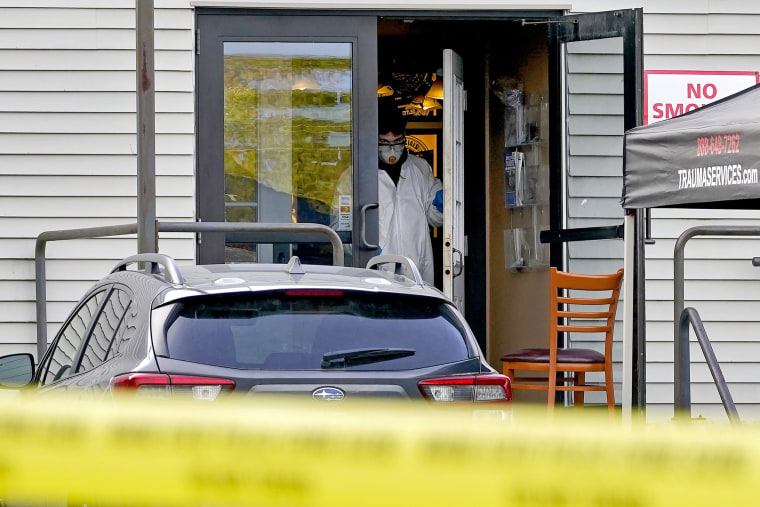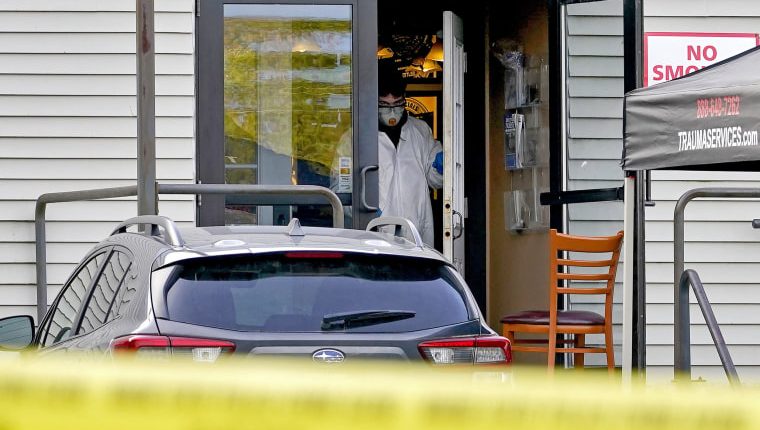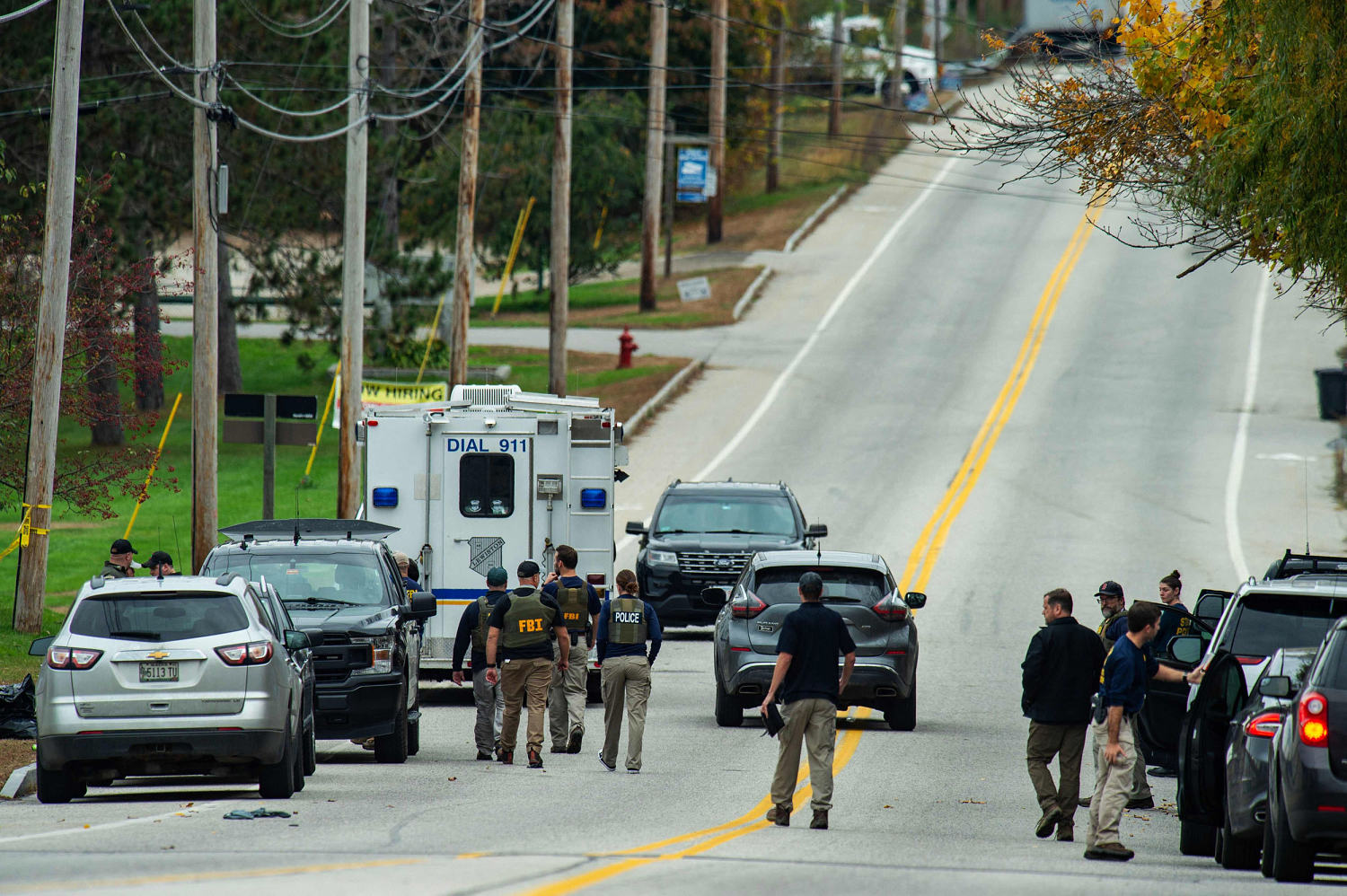Maine’s yellow flag law is supposed to prompt authorities to restrict gun access for potentially dangerous people. But weaknesses in the 3-year-old law led to at least one shooting years before a gunman killed 18 people in Lewiston last month, sparking a national debate around the effectiveness of laws that are supposed to prevent such massacres.
In February 2021, Shaun Simmons’ family grew increasingly concerned over remarks he made about killing himself and a man his mother was dating, according to his brother-in-law, Brian Dunnigan.
Simmons, 57, who suffered from severe alcoholism, had purchased a Sig Sauer 9 mm pistol while intoxicated, which escalated fears that he would carry out his threats, Dunnigan said.
Dunnigan, a paramedic at the time who had seen hundreds of firearm-related incidents over nearly three decades on the job, said he called his local police department to trigger Maine’s yellow flag law. The measure, unique to the state, allows law enforcement to begin a multistep process to restrict a dangerous person’s access to guns.
“I begged the police,” Dunnigan said.
But the Wells Police Department did not attempt to evaluate Simmons. Police Chief Jo-Ann Putnam told NBC News that the agency did not conduct a welfare check because the family had not requested one, because Simmons lived with his mother and not alone, and because it was not clear from Dunnigan’s call that Simmons posed an imminent threat — all of which Dunnigan disputes.
Less than three weeks after Dunnigan went to police, Simmons shot his mother’s boyfriend in the chest in front of her, then sat on the couch and killed himself.
“The gun was on the floor right in front of his feet,” Dunnigan said, “the same gun that I had tried to get away from him.”
‘Two steps too many’
The double shooting in Wells happened less than 70 miles from Lewiston, where a U.S. Army reservist fatally shot 18 people on Oct. 25, despite his family warning law enforcement and military officials about his deteriorating mental health.

Both tragedies have become stark examples of the complexities of the law — and what critics call its failures — after it was enacted in 2019 in direct response to the Parkland, Florida, high school shooting and other massacres like it.
“Our yellow flag law, which is the only state that has one, makes us an outlier, not a model,” said Margaret Groban, a former federal prosecutor who teaches firearms regulation at the University of Maine School of Law.
The law, gun safety advocates said, is a watered-down version of the so-called red flag laws that have been adopted by 21 states. These laws vary but generally require fewer procedural steps.
Under Maine’s law, a person who is concerned that a family member may be a threat to themself or others must first alert law enforcement, which would then take the family member into protective custody, according to Nick Suplina, senior vice president for law and policy at Everytown for Gun Safety, a national gun violence prevention nonprofit.
From there, a medical professional would need to evaluate the family member and deem them a threat — an added barrier that is not required under red flag laws, experts said. Only after a medical diagnosis could a judge approve an order to temporarily remove the firearm.
That is “two steps too many,” Groban said.
Police officials in Maine have repeatedly declined to say whether law enforcement failed to act under the state’s yellow flag law to prevent the Lewiston mass shooting. The gunman in that case had been hearing voices for months, according to his family, who said they had reached out to police and the Army Reserve as they “got increasingly concerned.”
In July, when the shooter’s unit was undergoing annual training in New York, Army leaders took him to receive psychiatric treatment and later directed that he not have weapons, Army spokesperson Bryce Dubee said.
Military officials made multiple attempts to contact him in the months that followed and requested local police conduct a welfare check, Dubee said. The Sagadahoc County Sheriff’s Office has said that it conducted the check but that no one answered the door.
At a news conference a week ago, Michael Sauschuck, commissioner of the Maine Department of Public Safety, said, “I’m not gonna talk about who knew what and when.”
The agency on Friday directed comment to the Sagadahoc County Sheriff’s Office, which did not immediately respond.
Lewiston deepens old wounds
In Wells, the latest shooting has inflamed unhealed wounds for Simmons’ family.
“All of this news just brings up more feelings of guilt and pain, and it’s hard,” Simmons’ sister, Sharon Simmons-Dunnigan, said through tears. “We just try to suppress everything just to go on every day.”
Source: | This article originally belongs to Nbcnews.com









